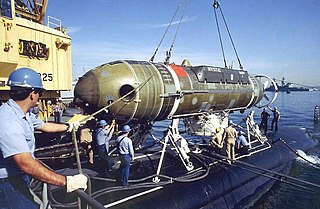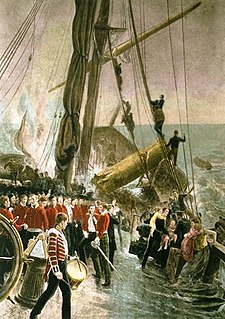 W
WThe A-1 lifeboat was a powered lifeboat that was made to be dropped by fixed-wing aircraft into water to aid in air-sea rescue operations. The sturdy airborne lifeboat was to be carried by a heavy bomber specially modified to handle the external load of the lifeboat. The A-1 lifeboat was intended to be dropped by parachute during Dumbo missions to land within reach of the survivors of an accident on the ocean, specifically airmen survivors of an emergency water landing.
 W
WThe A-3 lifeboat was an airborne lifeboat developed by the EDO Corporation in 1947 for the United States Air Force (USAF) as a successor to the Higgins Industries A-1 lifeboat. The A-3 lifeboat was a key element of "Dumbo" rescue flights of the 1950s.
 W
WAirborne lifeboats were powered lifeboats that were made to be dropped by fixed-wing aircraft into water to aid in air-sea rescue operations. An airborne lifeboat was to be carried by a heavy bomber specially modified to handle the external load of the lifeboat. The airborne lifeboat was intended to be dropped by parachute to land within reach of the survivors of an accident on the ocean, specifically airmen survivors of an emergency water landing. Airborne lifeboats were used during World War II by the United Kingdom and on Dumbo rescue missions by the United States from 1943 until the mid-1950s.
 W
WAS-28 is a Priz-class deep-submergence rescue vehicle of the Russian Navy, which entered service in 1986. It was designed for submarine rescue operations by the Lazurit Design Bureau in Nizhny Novgorod. It is 13.5 m (44 ft) long, 5.7 m (19 ft) high, and can operate up to a depth of 1,000 m (3,300 ft).
 W
WThe Biskop Hvoslef is a veteran Norwegian sailing vessel. The vessel was named after Bishop Waldemar Hvoslef (1825-1906). Bjarne Aas designed the vessel which was his first rescue boat. The ship was built for the rescue company of Br. Fallfall in Hardanger and put into service in 1933. The ship was utilized as a search and rescue by the Redningsselskapet on the Norwegian coast between 1933 and 1969. It is now a privately owned vessel.
 W
WThe Carley float was a form of invertible liferaft designed by American inventor Horace Carley (1838–1918). Supplied mainly to warships, it saw widespread use in a number of navies during peacetime and both World Wars until superseded by more modern rigid or inflatable designs. Carley was awarded a patent in 1903 after establishing the Carley Life Float Company of Philadelphia.
 W
WA davit is any of various crane-like devices used on a ship for supporting, raising, and lowering equipment such as boats and anchors. The term sometimes refers to structural arms in other applications where a suspended load is supported in similar fashion to the naval application.
 W
WA deep-submergence rescue vehicle (DSRV) is a type of deep-submergence vehicle used for rescue of downed submarines and clandestine missions. While DSRV is the term most often used by the United States Navy, other nations have different designations for their vehicles.
 W
WHermann Marwede is the largest search and rescue cruiser (46-m-class) of German Maritime Search and Rescue Service (DGzRS) and at the same time it is also the largest search and rescue cruiser of the world. The ship is based at the SAR-station Helgoland.
 W
WAn inflatable boat is a lightweight boat constructed with its sides and bow made of flexible tubes containing pressurised gas. For smaller boats, the floor and hull is often flexible, while for boats longer than 3 metres (9.8 ft), the floor typically consists of three to five rigid plywood or aluminium sheets fixed between the tubes, but not joined rigidly together. Often the transom is rigid, providing a location and structure for mounting an outboard motor.
 W
WA lifeboat or liferaft is a small, rigid or inflatable boat carried for emergency evacuation in the event of a disaster aboard a ship. Lifeboat drills are required by law on larger commercial ships. Rafts (liferafts) are also used. In the military, a lifeboat may double as a whaleboat, dinghy, or gig. The ship's tenders of cruise ships often double as lifeboats. Recreational sailors usually carry inflatable liferafts, though a few prefer small proactive lifeboats that are harder to sink and can be sailed to safety.
 W
WThe lifeboats of the RMS Titanic played a crucial role in the disaster of 14–15 April 1912. One of the ship's legacies was that she had 20 lifeboats that in total could only accommodate 1,178 people, despite the fact that there were approximately 2,208 on board. RMS Titanic had a maximum capacity of 3,547 passengers and crew.
 W
WThe LR5 is a manned submersible which was used by the British Royal Navy until 2009 when it was leased to support the Royal Australian Navy. It is designed for retrieving sailors from stranded submarines and is capable of rescuing 16 at a time. The Royal Navy now has the use of the NATO Submarine Rescue System.
 W
WThe LR7 is a manned submersible undersea rescue vehicle in service with the People's Liberation Army Navy (PLAN) since 2009, and is usually deployed onboard one of China's Type 926 submarine support ships. Constructed by the British firm Perry Slingsby Systems, of the Triton Group, as a development of earlier LR5, the 25 ft long LR7 is designed for retrieving sailors from stranded submarines at a depth greater than 300 meters, and is capable of rescuing 18 at a time.
 W
WAndreas Petrus Lundin, or Andrew Peter Lundin I, was an engineer for the Welin Marine Equipment Company. He created a series of lifeboats. In 1914 to test his design he arranged to have a newlywed couple cross the Atlantic Ocean in a Lundin Power Life Boat. He died on August 29, 1929.
 W
WThe Mary White was a lifeboat based in Broadstairs, Kent, England, named in 1851 after the completion of an heroic rescue of a brig, the Mary White.
 W
WA MOB, short for man overboard boat, is a small, fast rescue boat which large vessels, especially passenger ferries and cruise ships, use for man overboard situations. MOBs use diesel or gasoline-powered engines and are constructed of highly buoyant materials making them nearly unsinkable.
 W
WMystic class is a class of Deep-Submergence Rescue Vehicles (DSRVs), designed for rescue operations on submerged, disabled submarines of the United States Navy or foreign navies. The two submarines of the class were never used for this purpose, and were replaced by the Submarine Rescue Diving Recompression System.
 W
WThe NATO Submarine Rescue System (NSRS) is a tri-national project to develop an international submarine rescue system. The system provides a rescue capability primarily to the partner nations of France, Norway and the United Kingdom, but also to NATO and allied nations and to any submarine equipped with a suitable mating surface around its hatches.
 W
WA rescue craft is a boat, ship or aircraft used in rescuing.
 W
WTeddington Lifeboat Station is a lifeboat station in Teddington, in west London, on the River Thames. It is one of the Royal National Lifeboat Institution (RNLI)'s newest lifeboat stations and is also one of the first to cover a river rather than estuarial waters or the sea. Teddington Lock is the highest tidal point on the Thames.
 W
WTitanic Lifeboat No. 1 was a lifeboat from the steamship RMS Titanic. It was the fourth boat launched to sea, over an hour after the liner collided with an iceberg and began sinking on 14 April 1912. With a capacity of 40 people, it was launched with only 12 aboard, the fewest to escape in any one boat that night.
 W
W"Women and children first" is a code of conduct dating from 1852, whereby the lives of women and children were to be saved first in a life-threatening situation, typically abandoning ship, when survival resources such as lifeboats were limited. However, it has no basis in maritime law.